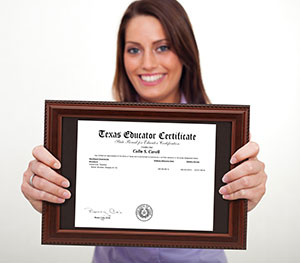The Writing Process
Often times, students think of themselves as “bad writers.” Mainly, this is due to the misconception that you are naturally either a great writer or a bad writer. Students should be taught that writing is a skill that requires practice to improve. For example, no one expects someone to shoot a 3-pointer the first time they play basketball. Basketball requires skill, practice, and dedication to become better. Writing is the same in that you have to develop and practice the skills needed to create a well-developed, thoughtful piece of writing. No one, not even professional writers, will write out an error-free draft in their first attempt. Writing is a process that requires time and effort and should be taught accordingly.
Teaching your students the writing process is giving them a tool to aid them in creating an essay. The writing process has five stages: pre-writing, drafting, revising, editing, and publishing. These stages will guide your students through an organized thought process that, in the end, produces an outstanding essay. Listed below the five stages of the writing process along with some common questions and suggestions that students encounter when working through the writing process.
The first stage of the writing process is Pre-writing.
Question: How do I get ideas of what to write about in the first place?
- Personal experiences
- Media – magazines, books, TV, radio, Internet, newspaper, etc.
- Music
- Dreams
- Responding to literature
- Research
- Your imagination
- Many others!
Question: What ways can I pre-write?
- Free writing
- Journaling
- Lists
- Brainstorming – individually or with a group
- Webbing/mapping/clustering
The second stage of the writing process is Drafting.
Suggestion: Double-space your rough draft so you can go back and make corrections or add content.
Tips on going from pre-writing to drafting:
- Be selective in the topics you chose from your pre-writing. You do not have to include everything from your pre-writing in your draft. Pick your best ideas and make sure they relate to your topic.
- WRITE! WRITE! WRITE! Once you start writing, don’t stop! Revising and editing come later. Just let your ideas flow!
- Don’t count words, ask your teacher how long it should be, or when it is done. When YOU feel like you have completed your ideas, you are then ready to go on to the next stage.|
- HOLD IT! Before you go on to the next stage, make sure you have enough content to work with. If you feel that you are lacking content, go back to your prewriting for more ideas and details.
The third stage of the writing process is Revising.
Question: What is revising?
- Making decisions about how you want to improve your writing.
- Looking at your writing from a different point of view.
- Picking places where your writing could be clearer, more interesting, more informative, and more convincing.
Suggestions:- Can you read it out loud without stumbling?
- Does every word or action count? There should be a reason why a character says or acts a certain way.
- Is the series of events logical?
- Is your goal clear?
- Are vivid / descriptive words used to describe characters and/or events?
- Is your train of thought clear? Are there any tangents?
- Do you use a variety of verbs throughout the piece? (something beside “said”)
- Is it wordy and redundant? Are you using the same words and phrases over and over?
- Is there a catchy introduction? Does the conclusion leave the reader thinking?
- Is a vivid mental picture created in the reader’s mind?
The fourth stage of the writing process is Editing.
Questions: What is editing?
- Spelling
- Capitalization
- Punctuation
- Grammar
- Sentence structure
Suggestions:- Be sure that every sentence has 2 parts: the subject (who or what) and the predicate (what’s happening)
- Use sentence combining words: and, but, yet, or, so, who, whom, which, that, whose, because, although, when, if, where, and others
- Use periods and commas when necessary but do not overuse.
- Do not overuse the exclamation mark!
- Use a dictionary to check spelling: beware of spell check
- The last stage of the writing process is Publishing: making your writing public.
Suggestions:- Blue, black ink or typed
- Center title on top line
- Writing is done margin to margin
- Indent each paragraph
- Single sided
- Single spaced
- Neat – no scribbles or overuse of liquid paper
The writing process should be taught as a cycle. Students can move forward, backward, and reverse the stages of the writing process as long as they get all of them in. Once students are taught the writing process, they have a tool to use to become effective writers.










